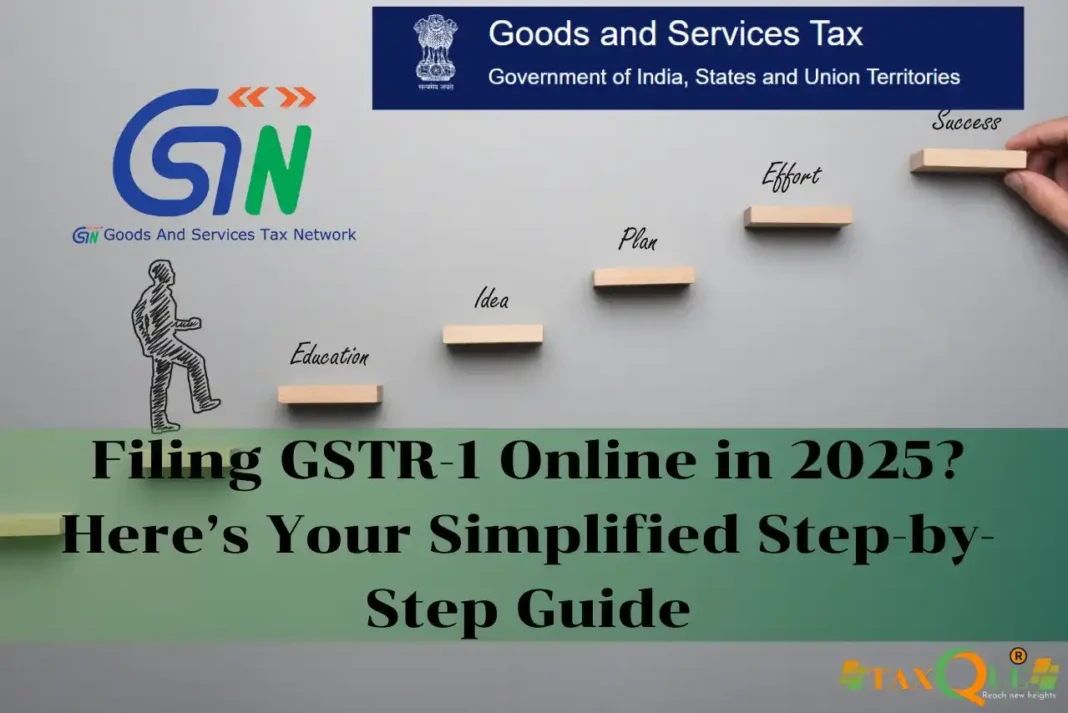Filing GSTR-1 Online in 2025? Here’s Your Simplified Step-by-Step Guide
Introduction
Filing GSTR-1 is one of the primary responsibilities of every GST-registered business in India. It captures details of all outward supplies (sales) made during a specific tax period. Filing it correctly and on time not only ensures compliance with the law but also builds credibility with buyers who rely on your data for Input Tax Credit (ITC). If you’re confused about how to file GSTR-1 online, this detailed guide for 2025 will walk you through every step of the process.
What is GSTR-1?
GSTR-1 is a monthly or quarterly return that contains details of all outward supplies of goods and services. It must be filed by every registered taxpayer under GST, except those under the composition scheme, non-resident taxable persons, and a few others.
Key points:
- Filed monthly by businesses with turnover > ₹5 crore.
- Filed quarterly under QRMP scheme by businesses with turnover ≤ ₹5 crore.
- Includes B2B, B2C sales, credit/debit notes, exports, and advances.
Why It Matters
- Enables your buyers to claim Input Tax Credit (via GSTR-2A & 2B).
- Helps the government track tax liability on outward supplies.
- Mandatory for timely compliance to avoid penalties and notices.
- Essential for accurate GSTR-3B auto-population.
Step-by-Step Guide to File GSTR-1
Step 1: Log in to the GST Portal
Visit www.gst.gov.in and log in using your GSTIN and credentials.
Step 2: Navigate to the Return Dashboard
Go to ‘Returns Dashboard’, select the financial year and return filing period.
Step 3: Click on “Prepare Online”
Under GSTR-1, click on “Prepare Online” to start entering data manually or “Upload JSON” if using offline tools.
Step 4: Fill in Outward Supply Details
You need to fill in various sections:
- B2B Invoices (Section 4A)
- B2C Large (Section 5)
- Exports (Section 6A)
- Debit/Credit Notes
- Advances Received/Adjusted
- HSN Summary
Step 5: Save and Preview
Click “Save” after entering each section. Use the “Preview” button to download a summary PDF.
Step 6: Submit the Return
Click “Submit” to freeze the return. Data becomes non-editable after this.
Step 7: File with DSC or EVC
Click “File Return”, then choose DSC or EVC to complete the filing process.
Step 8: Download Acknowledgement
Download the acknowledgement for your records (ARN will be generated).
Common Mistakes to Avoid
- Missing invoice entries or incorrect invoice numbers.
- Not updating B2B/B2C classification properly.
- Filing wrong GSTIN of the buyer.
- Not reconciling with sales register before filing.
- Forgetting to file Nil return if there are no outward supplies.
Conclusion
GSTR-1 filing is a cornerstone of GST compliance in India. With the right preparation and understanding of the process, you can file your returns on time and avoid unnecessary penalties or ITC issues for your clients. Stay updated with deadlines, verify your data thoroughly, and use this step-by-step guide to file confidently.
FAQs
Q1. Who should file GSTR-1?
All regular taxpayers except composition dealers, input service distributors, and non-resident taxable persons.
Q2. What is the due date for filing GSTR-1?
- Monthly: 11th of the following month
- QRMP Scheme: 13th of the month following the quarter
Q3. Is GSTR-1 filing mandatory even for zero sales?
Yes, a Nil GSTR-1 must be filed if there are no outward supplies in the period.
Q4. Can I revise GSTR-1 after submission?
No. You cannot revise a filed GSTR-1, but corrections can be made in the next return.
Q5. What if I miss the GSTR-1 filing deadline?
Late fees of ₹50/day (₹20/day for Nil returns) and potential notice from the department.





